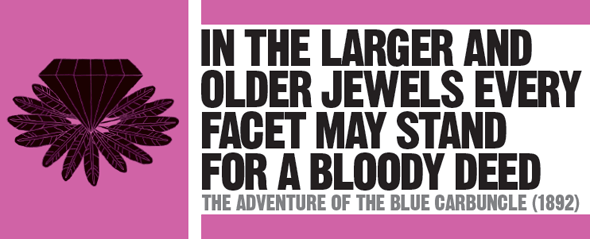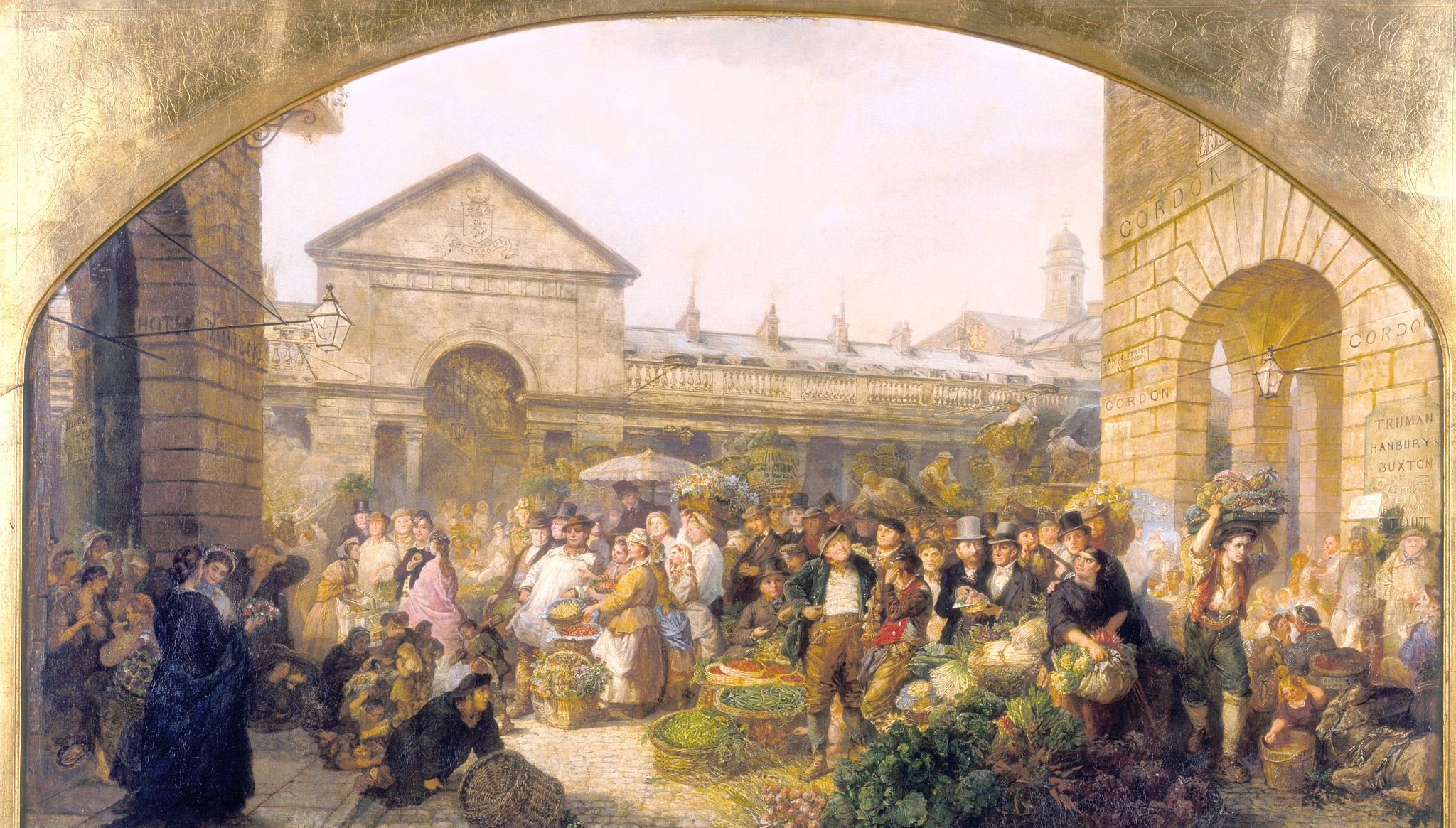
IN CONTEXT
Short story
US: January 1892 (as “The Christmas Goose that Swallowed a Diamond”)
UK: January 1892
The Adventures of Sherlock Holmes, 1892
Henry Baker British Museum employee, and drinker.
Peterson Commissionaire.
Countess of Morcar Wealthy owner of the blue carbuncle.
Catherine Cusack Lady-in-waiting to the Countess of Morcar.
Breckinridge Poultry seller at Covent Garden market.
John Horner Plumber accused of stealing the blue carbuncle.
James Ryder Attendant at the Hotel Cosmopolitan.
The story opens on a frosty morning two days after Christmas. Watson calls on Holmes one day to find his friend busy examining an old hat. This “battered billycock,” has been found early on Christmas morning, along with a fine plucked goose for the pot, by a commissionaire named Peterson, who had witnessed their owner being attacked by a street gang. In the struggle that ensued, the victim had dropped the hat and goose before fleeing. Peterson picked them up and headed straight to Holmes to tell him of the events; he left the hat with Holmes for examination and took the goose back to his wife to cook.
An extraordinary discovery
The reader soon learns the victim was a man named Henry Baker. On examining the hat, Holmes establishes that Baker is a middle-aged man with gray hair, which he anoints with lime cream and has recently had cut. More surprisingly, he deduces that Baker is intellectual, was once well off but has fallen on hard times (probably due to drinking), and is physically unfit, and that his home does not have gas lighting. Holmes’s keen deductions are only slightly compromised in that he makes use of the now-debunked science of phrenology, when he points out the size of the hat, saying “a man with so large a brain must have something in it.”
Suddenly Peterson bursts into the room and announces excitedly that while preparing the goose for roasting, his wife found a large blue gem in its crop. Holmes at once recognizes the stone as the famous blue carbuncle, recently stolen from the Countess of Morcar at the Hotel Cosmopolitan. A suspect named John Horner, a plumber, is already in custody, but Holmes’s interest is piqued, and when the hat’s rather down-at-heel owner, Henry Baker, shows up, he unwittingly provides the detective with his first lead. Clearly ignorant of the goose’s contents, Baker informs Holmes he bought the bird at a “goose club” set up by the landlord of the Alpha pub, near the British Museum.
Conan Doyle’s footsteps
Holmes and Watson take a stroll through the “doctors’ quarter” of Wimpole Street and Harley Street, bound for the Alpha pub, following a route that was once Conan Doyle’s own daily commute. For a few months in 1891, shortly before writing this story, Conan Doyle lived just behind the British Museum and practiced medicine as an eye doctor in a clinic on Upper Wimpole Street. He rented a consulting room and a share of a waiting room, but patients were so scarce that, in his own words, “they were both waiting rooms.” He soon abandoned medicine to focus on his burgeoning career as a writer.
"Chance has put in our way a most singular and whimsical problem."
Sherlock Holmes
Holmes the trickster
As well as good old-fashioned legwork, Holmes employs a fair bit of psychological manipulation in his pursuit of the jewel thief. On meeting the poultry butcher who first sold the goose to the pub, he capitalizes on the man’s evident weakness for gambling to wheedle information out of him. Later, he utilizes carefully stage-managed shock tactics to prove one man’s innocence and another’s guilt.
At the story’s denouement, the head attendant at the Hotel Cosmopolitan, James Ryder, is revealed to have himself stolen the gemstone with the help of Catherine Cusack, the Countess’s lady-in-waiting. He then framed Horner, whom he knew to have a criminal record. An inexperienced opportunist, Ryder took the gem to a criminal acquaintance who would sell it on his behalf. Fearful he would be stopped by the police, Ryder attempted to conceal the carbuncle by feeding it to a goose that his sister had promised him for Christmas, but somehow he ended up choosing the wrong bird from her flock. Meanwhile, the gem made its way via Covent Garden’s poultry market, the Bloomsbury pub, and an unfortunate street altercation in Tottenham Court Road, safely into Holmes’s hands.

In the 19th century, Covent Garden market, where the goose in this story was sold, bustled with buyers and sellers hawking fresh food.
The spirit of Christmas
“The Adventure of the Blue Carbuncle” is a sort of Sherlock Holmes Christmas special, with a heart-warming Dickensian dash of redemption. It is suffused with light, comedic moments, and Holmes gets so carried away with what he terms “the season of forgiveness” that he ends up letting the distraught and remorseful culprit go free.
JEWEL THEFT
Although jewel theft makes a compelling story, a glance through the Old Bailey’s court records around the period when “The Adventure of the Blue Carbuncle” was written shows only a smattering of such cases. Most crimes were small-scale domestic burglaries, and there is certainly no prize approaching the value of the countess’s famous carbuncle.
In the world of fiction, however, Conan Doyle’s own brother-in-law was about to create one of the greatest jewel thieves of all time. In 1898, E. W. Hornung, who was married to Conan Doyle’s sister Connie, wrote the first of 27 stories dealing with the exploits of A. J. Raffles, the gentleman thief. Much as Holmes’s work is chronicled by Watson, Raffles’ adventures are recorded by his erstwhile companion Bunny Manders. The first volume of these tales, The Amateur Cracksman, was published in 1899 with a dedication to his brother-in-law that read “To A.C.D. This Form of Flattery.”
